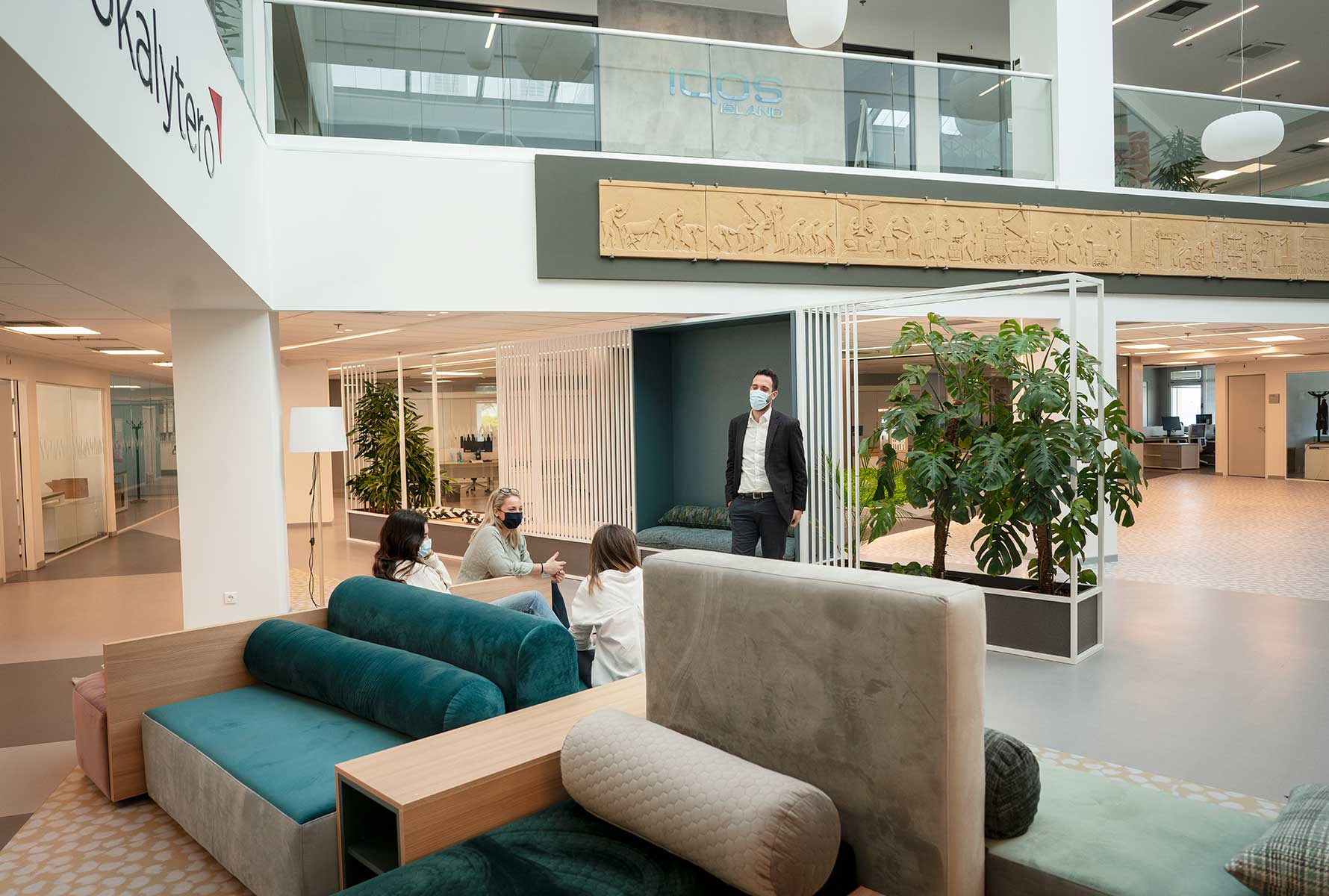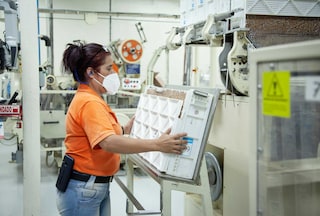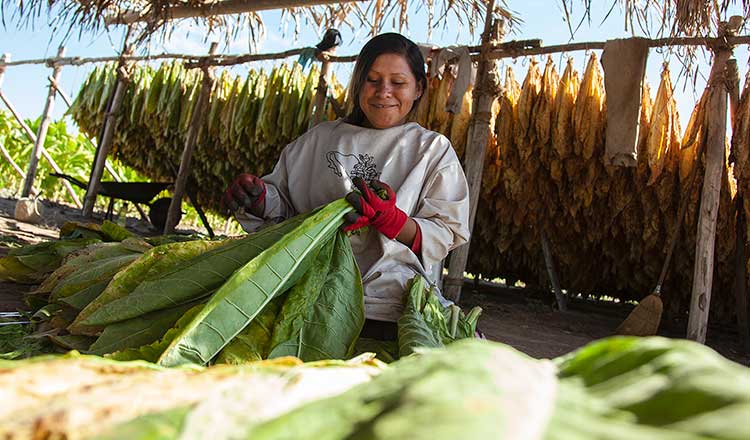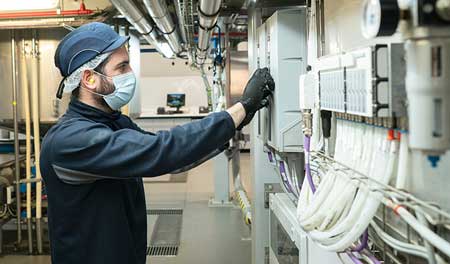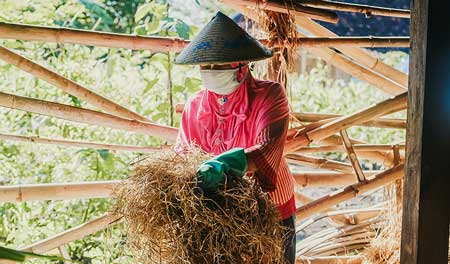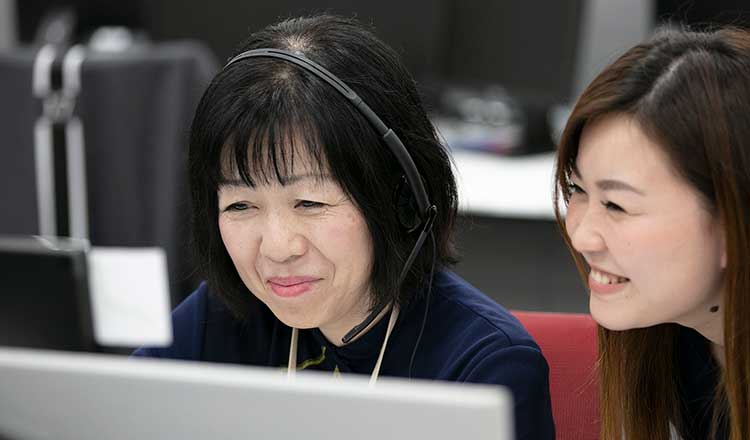| INTEGRATED REPORT 2020 |
We are committed to providing a safe and secure working environment for all employees, contractors, and visitors. Our responsibility doesn’t stop at the factory gate; we expect our suppliers and tobacco growers to keep their workers safe, too.
Topic description
To PMI, health, safety, and well-being at work means promoting a working environment that protects the physical and mental well-being of all involved.
The business case
Maintaining a happy, safe, and healthy workplace isn’t just good for employees, it is also good for our business; happy workers are more engaged, more productive, and more likely to stay at the company. Promoting a safe and healthy working environment is therefore key for PMI and our business. Making sure that our employees are mentally well, socially stimulated, and physically safe is every bit as important as looking after their financial security. It helps manage operational costs and foster a culture that attracts and retains great people. In short, implementing strong health, safety, and well-being management creates and protects value. It boosts morale, fosters teamwork, increases productivity, reduces absenteeism, increases job satisfaction, and strengthens engagement. A highly motivated, dedicated, and productive workforce is the key enabler of PMI’s business transformation.
Socioeconomic well-being of tobacco-farming communities is a tier 1 topic within our strategic pillar Caring for the people we work with.

Our progress in 2020
read more
The right thing to do
Our aim:
<0.3
Total recordable incident rate for employees and contractors by 2025.
Achieving our aims
We aim for a workplace that promotes the health, safety, and well-being of our workforce. We have embedded clear methodologies, procedures, and robust controls in our factories, offices, and fleet aimed at ensuring our employees and others who are on PMI sites stay safe.
Working conditions at PMI are governed by our Guidebook for Success (our code of conduct) and our health, safety, and security principles and practices. PMI’s Global Head of People & Culture and Senior Vice President, Operations oversee the company’s strategy and performance in this area.
The health and safety of employees and contractors is covered by our management systems, which are based on recognized guidelines and standards, including ISO 45001, and assessed and audited internally and externally. These systems enable us to monitor health and safety performance across all our manufacturing facilities, offices, and in our fleet. We routinely update our standards and train our staff to ensure teams understand and align with the requirements.
We conduct risk assessments to identify hazards and implement necessary controls. Our corporate targets on incidents help us evaluate the effectiveness of our safety policies and programs. Our health and safety metrics are externally verified by SGS.
See the External Verification Statement of our environmental and health and safety data.
Our training programs, delivered in a range of formats, cover all aspects of health and safety, including risk assessment, safety management, incident investigation, and standards and procedures.
Health and safety in our factories is coordinated centrally by our Global Manufacturing team. At site level, each facility has a dedicated team that ensures the standards are met on the ground. Team members constructively challenge their peers and benefit from cross-auditing by colleagues at other sites. All incidents in our manufacturing operations are subject to in-depth root cause analysis, and we apply the same thorough approach to all contractors in our manufacturing facilities. We use behavioral observation systems (BOS) in our factories to instill a culture in which everyone involves themselves in openness, care, observation, and behavior reinforcement. We advance this culture change through communication with employees and safety alerts or notice boards. Every person’s contribution counts—a fact we recognize through awards and other means of acknowledgment. Through BOS, we are further embedding safety into the organization’s DNA in a planned, structured, and standardized way. It will make a significant contribution to delivering on our safety ambition. Yearly, we conduct assessments to evaluate our sites’ safety culture level and survey employees to identify improvement opportunities.
We allocate a total of over 160 people to manage security and market safety, including safety for our fleet of around 23,000 vehicles, led by our Global Head of Security and Market Safety in coordination with local fleet safety committees. These personnel run safety programs, training, and engagement at the country level, using fleet diagnostics and performance indicators to continually evaluate progress. PMI’s fleet safety management system covers risk assessment, driver training, vehicle safety, and driver behavior; our procurement policy ensures maximum safety features in fleet contracts. In our fleet operations, our target is to reduce high-severity collisions, with an ongoing goal of eliminating fatal accidents completely.
We are committed to a holistic approach to supporting employee well-being that addresses physical, emotional, and mental health. We provide employees with a range of healthcare options tailored to local needs and contexts.
Many teams across PMI manage and contribute to employee’s health and well-being at the local country or site level, including occupational health and safety and human resources specialists. While this approach allows the design of well-being support by and for local needs, it is somewhat fragmented and inconsistent. In 2020, we began moving to a more centralized approach, for example introducing a global approach to Employee Assistance Programs, flexible work options, and parental leave. In 2021, we will bring accountability for a global holistic well-being roadmap made under a newly appointed Global Head, Health & Resilience role, reporting to the Chief Diversity Officer.

Our progress in 2020
read more
Performance metrics
view dataThis online content about our Integrated Report should be read in conjunction with PMI’s 2020 Integrated Report. The information and data presented here cover the 2020 calendar year or reflect status at December 31, 2020, worldwide, unless otherwise indicated. Where not specified, data come from PMI estimates. Please also refer to 'About this report' on page 3 of the 2020 Integrated Report for more information. Aspirational targets and goals do not constitute financial projections, and achievement of future results is subject to risks, uncertainties and inaccurate assumptions, as outlined in our forward-looking and cautionary statements on page 145. In the 2020 Integrated Report and in related communications, the terms “materiality,” “material,” and similar terms, when used in the context of economic, environmental, and social topics, are defined in the referenced sustainability standards and are not meant to correspond to the concept of materiality under the U.S. securities laws and/or disclosures required by the U.S. Securities and Exchange Commission.
